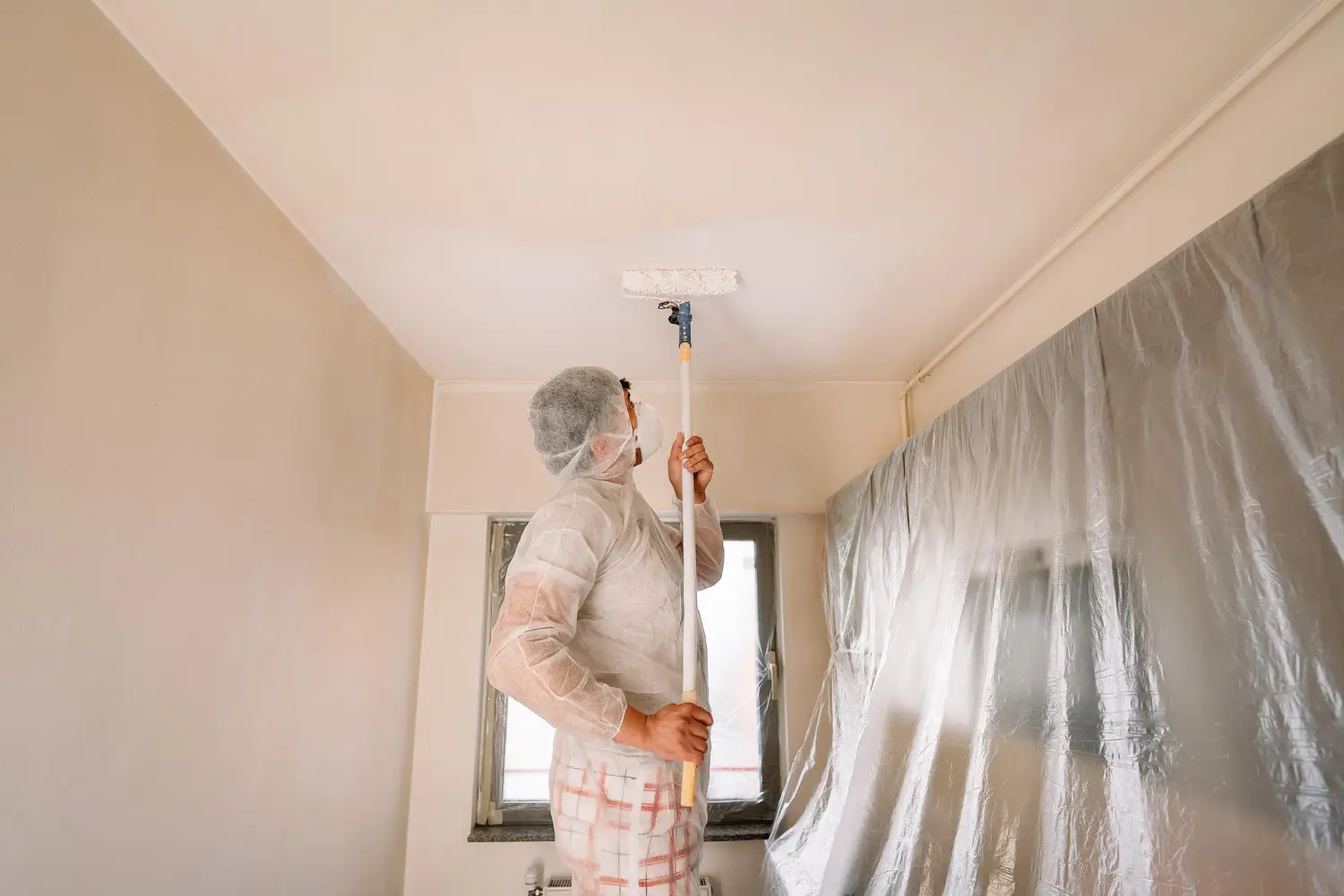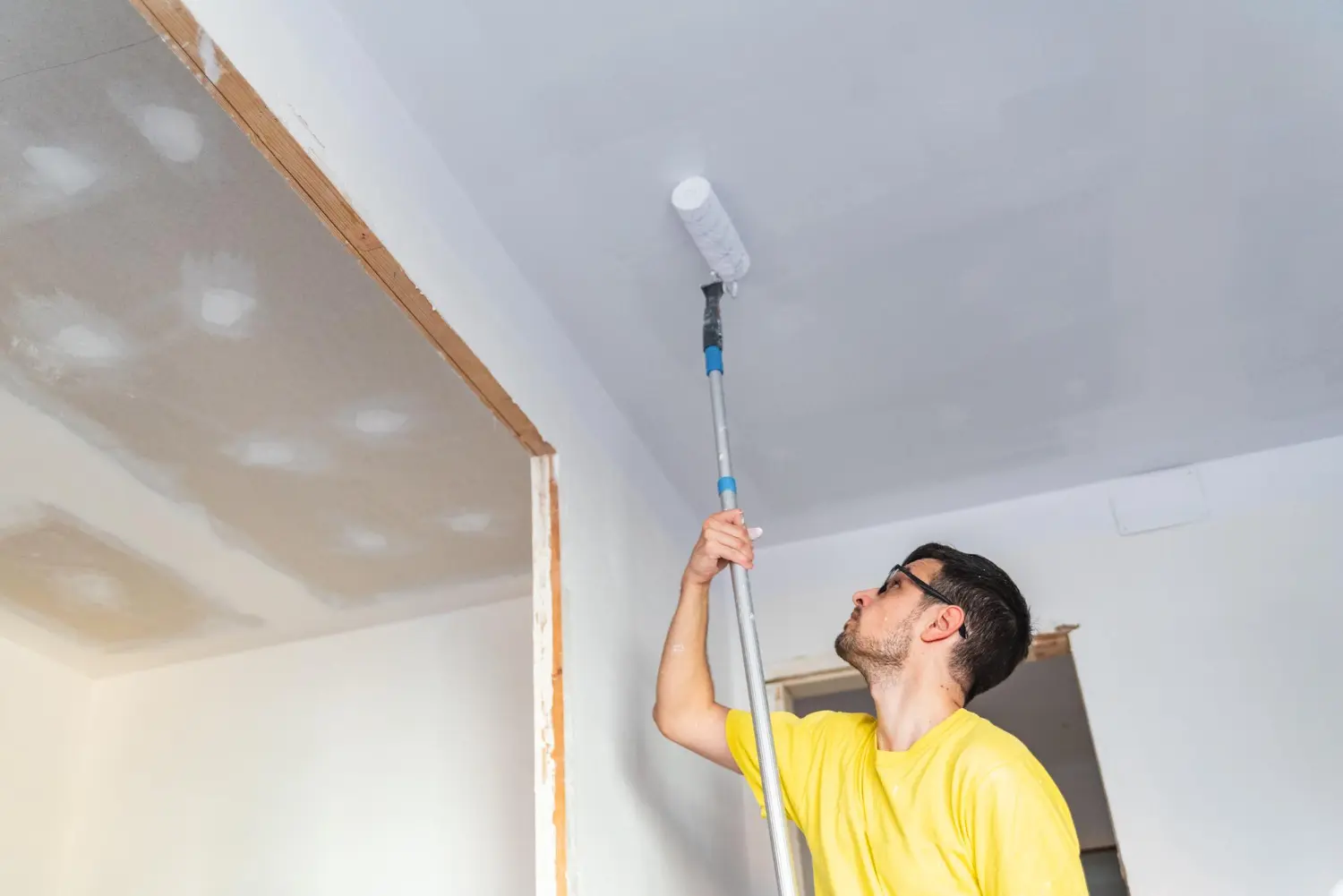Exterior Paint Choices: Flat or Satin Finish?

As anybody who’s ever gone about the job will know, selecting the perfect paint for a property’s exterior isn’t exactly easy. Selecting the ideal color is difficult enough, but then there is also the question of flat and satin finishes. You know that your home’s exterior is exposed to UV rays, snow, wind, rain and so on, meaning it’s not quite as straightforward as selecting an indoor finish.
So if you’re approaching the job and still haven’t made your mind up, what kinds of considerations are worth bearing in mind?

Flat Exterior: Sophisticated Finish, Difficult to Maintain
First of all, the characteristics of a flat finish are a little like those of raw cardboard. If you were to feel the surface of a flat exterior, it would feel dry and slightly chalky. In terms of looks, the appearance is soft, velvety and somewhat luxurious. Flat finishes are great for hiding imperfections and therefore tend to make exteriors look more flawless than they otherwise might.
Another significant advantage of going with a flat finish is that if and when you need to apply a second coat or overlap coats from one section to another, the result still appears seamless and flawless. Regardless of the application method you use, applying a second coat or touch-ups where required is comprehensively easy with a flat finish.
On the downside…and it’s a relatively big one…it is almost impossible to clean a flat exterior. Once again, it’s a little like attempting to clean cardboard – you can scrub and wipe at it all you like, but it probably isn’t going to make a big difference. As such, it’s always wise to have an extra can of whichever flat paint your choose on-hand, given the way in which touch-ups are definitely going to be called for at some point or another.
Satin Exterior Finish: Shinier, More Durable
The difference with a satin exterior finish is that while it still feels a little like cardboard to the touch, it nonetheless feels as if it has a light coating of wax on the surface. It has a small amount of shine to it and a very slight reflective quality, which in turn means it appears brighter and bolder in color. As such, it can definitely be the more eye-catching of the two in terms of color reproduction and brightness, but nonetheless is far more likely to allow imperfections to show through.
Quite the opposite of the finish mentioned above, the biggest advantage with a satin exterior finish is that it is comprehensively easy to keep clean. Simply wiping or hosing it down on occasion is all that’s needed to keep the surface looking as pristine as possible for as long as possible. You may even find that heavy rainfall does you an occasional favour.
On the downside, any overlaps or touch-ups have the potential to lead to imperfections in the overall finish. It is comparatively difficult to touch-up this kind of paint without it being somewhat noticeable.
…and the winner is?
So when taking into account all of the above, which of the two represents the superior choice for exterior home painting?
The answer…well, as always it comes entirely down to both your own personal preferences, where your property is located and indeed the current condition of your property.
Generally speaking, professional painters usually side with a satin finish as the number one choice for property exteriors. The reason being that it has the potential to not only look outstanding, but is also much easier to look after and maintain over time. The endless selection of bright and bold color choices is also a bonus.
But at the same time, there are other instances where a flat finish could be the better choice. For example, if the exterior of your home is extensively blemished and riddled with imperfections, a flat finish could be the easiest and most effective way of hiding them. In addition, flat paint is also much easier to use in DIY terms and it makes it easy to create a seamless and flawless finish.
Then again, in busy households where pets and kids get up to the usual antics, it’s largely inevitable that the exterior of the home is going to find itself subject to all manner of daily and on-going abuse. In which case, it’s better to go with the type of paint you can actually clean, which is of course a satin or semi-gloss paint.
If still unsure, give the professionals a call for a few additional pointers.










